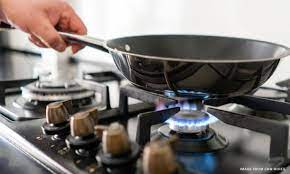When they are turned on, and running, gas stoves produce external pollutants that comprise of nitrogen oxides, formaldehyde, and carbon monoxide. Furthermore, according to new research studies, while the appliances are not running, they produce planet-warming fossil gas.
According to an article published on Stuff.co.nz, Stanford university researchers study the quality of air with hobs burning natural gas that homes in California produce. This gas is a fossil fuel that mostly comprises of methane.
New and old stoves alike produce little elements of methane, out, into the air. Most of the amounts of methane leak out while the appliances are not running. According to researchers, they have also discovered that a few moments after the gas hobs have been turned on, unventilated kitchens appear to have specific amounts of pollutants that go beyond the required international air quality parameters for these elements.
A domestic gas industry specialist or representative, though, thinks the findings are not applicable to New Zealand. Bits of amounts of methane gas produced out of homes don’t put health of people at risk of being harmed. However, bigger amounts of leaks may become the causes of explosion.
When the methane is burned, though, for example, that of a natural gas hob, the combination of elements emits air pollution. This pollution emitted comprises of nitrogen oxides. Such gases may be the culprits of people getting asthma or play a role in causing respiratory infection. It’s important to keep in mind that children and adults are the people who are mostly at risk in getting these medical problems.
According to research studies published in the Environmental Science and Technology journal, nitrogen oxides have accumulated in the environment to a total amount of concentration of100 parts per billion. This amount of concentration is way beyond the acceptable US air pollution standard limitations. While present in the outdoor spaces, the presence of the amounts of these elements are around within a few minutes the hob is switched on, and running, in homes that don’t utilize a range hood, nor have a sufficient amount of ventilation.
According to research experts, survey results indicate that an average or ordinary household only utilizes range hood, while the cooking is done at home 25 to 40 percent of the entire overall moments.
While they are turned off, stoves still emit the said elements. About 0.8 and 1.3 percent of the amounts of gas that the appliances utilize or consume is produced in the form of unburnt methane, according to researchers.



